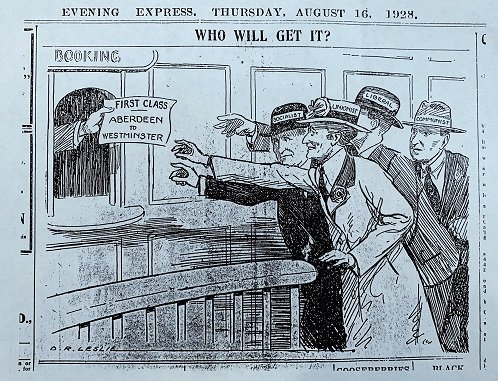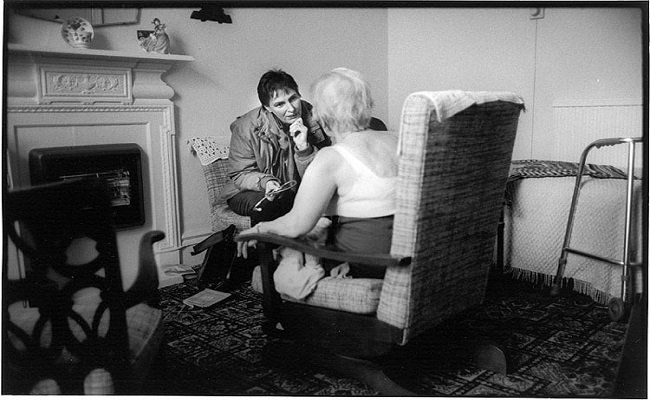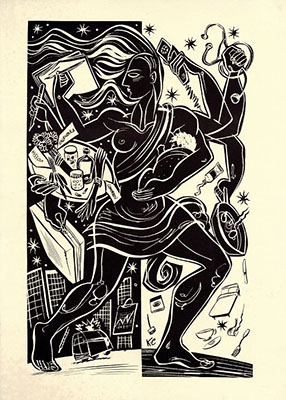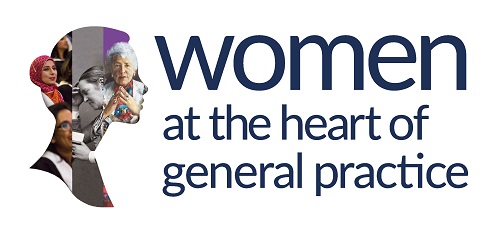The early pioneers had to combine ambition with realism. Without sufficient finances, the first British woman to qualify as a doctor Elizabeth Blackwell (1821-1910) could not afford to set up a practice in London.
Balancing career aspirations with social expectations has been a common thread, not least for those with dependent family - both men and women. Finding domestic help and childcare has often been as challenging as overcoming prejudices about appropriate specialties and achieving the acceptability of Less Than Full Time (LTFT) training and part-time working.
The stresses on doctors, male and female, have been increasingly highlighted in recent years. Tragically, women doctors have higher rates of suicide compared to an age matched group. Initiatives such as Practitioner Health, and the charity Doctors in Distress, both led by previous Chair Dame Clare Gerada, have spearheaded a response to these issues with practical confidential support.
General practice was often popular with earlier women doctors because other options were closed to them. Today general practice offers a combination of rewarding work embedded in a community, alongside flexibility in practices well-distributed across the country.
“I am firmly of the opinion that a group practice without a woman doctor is lop-sided.” Man GP, 1967
“When we arrived it had been a man and a wife practice and…the husband saw the upper class people, and he would go and have sherry with them, and the wife did, the main people in the town, and she would bustle in and was very, very popular” Janet Tait, 2013
“When I started as a woman with a young family who wanted to work less than full-time, I was regarded as an oddity whereas by the time I finished as a woman who worked full-time and did other things as well and had a family I was regarded as working probably harder than a lot of the men…The image of the dedicated doctor who was available 24/7 which I think my senior partners were still very close to brought with it a sort of respect and status that I don't think can be expected by a more part time work force.” Ann Telesz, 2019
Key dates
1888 Mary Scharlieb was the first woman to graduate with a MD, awarded by the University of London
1892 having excluded them for decades, the BMA voted almost unanimously for women’s admission as members
1960 around 2,500 women (20%) on the British Medical Register are women GPs
2014 a study found that women GP trainees outperformed their male peers in every area of the CSA College membership exam
People
Find out more about individual women’s experiences by clicking to expand.

In 1896, Elizabeth Latto Ewan (1875-1965) opened a practice in central Aberdeen – and so became the city’s first woman doctor. For a century, the practice (now Westburn Medical Group) only had women senior partners; a history highly unusual if not unique. The first male doctor, Dr John Robertson, did not arrive until 1963.
Dr Ewan’s practice was taken over by Dr Anne Mercer Watson, who was quickly joined by Dr Laura Sandeman (1862-1929). They moved to a new city-centre premises, and also opened a branch surgery in Torry, still one of the most deprived areas in Aberdeen.
In November 1914, soon after the outbreak of the First World War, Dr Sandeman volunteered to go to France as chief physician of the Scottish Women’s Hospital, an all-female unit set up by Dr Elsie Inglis, one of the first women doctors to work in Edinburgh. In 1917 Sandeman was promoted to Controller of Medical Services to Queen Mary’s Army Auxiliary Corps in France, stipulating that she be paid equally with her male equivalents.
Back in Aberdeen, she returned to medicine but decided that she could best influence health and social care by going into politics. She came second in North Aberdeen in both the 1924 general election, and a 1928 by-election.
She died from pneumonia during an influenza epidemic in 1929, exhausted caring for sick patients for several weeks. The local newspaper ran the headline “The best loved woman in Aberdeen”.
Image: This cartoon from the Evening Express on 16 August 1928 depicts Dr Laura Sandeman in her trademark fedora hat and coat competing as the Unionist candidate to win the parliamentary by-election Credit: Used by kind permission of DC Thomson & Co Ltd.

Dr Nish Manek is a GP registrar and Health Education England Leadership Fellow. She founded and runs the national Next Generation GP programme, which has trained over 2,150 young GP leaders. Nish was awarded the British Empire Medal for services to GP leadership in the 2018 Queen's Birthday Honours.
"I’ve felt proud to work in an increasingly female-dominated specialty, and this demographic shift will only continue. For me, as a relatively new mum, I hope that general practice can maintain its reputation for being a family friendly career going forwards.
"Lots of young GPs I know worry about balancing childcare with the long days in practice, and I think we risk losing a lot of excellent colleagues if we don’t think about how to create a more flexible work pattern. This flexibility can be a huge asset to the profession, and if we think carefully about how to combine this with meeting the needs of our patients, we can be an example to other specialties in terms of recruitment and retention. The shift to remote working in recent months could also help with new job plans that allow parents to also be present in the way they wish to at home, whilst still maintaining sufficient access for patients."

General Practice in Camera, 1995, Paul Schatzberger (1950-2020)
"After practising both medicine and photography for 34 years Paul Schatzberger stopped working as a doctor in 2007, leaving the NHS for the world of art. Paul qualified as a doctor in London 1973, became a Principal in General Practice in 1978, and moved to Sheffield in 1983.
"Inspired by John Berger’s book A Fortunate Man, the story of a dedicated country doctor illustrated by the evocative photography of Jean Mohr, Paul’s first serious photographs were of similarly committed general practitioner colleagues working in inner-city Sheffield during the 1980s.
"He said about his photography “I do not always know what it is that precisely captures my gaze at the time, or why. It is something to do with recognising a moment or situation and its meaning and seeing that this would speak as a photograph”.
"As a woman GP, working in Inner City London for most of my professional life, I think Paul has captured both the timeless intimacy and solitude that working as a woman GP entails – especially in urban centres.
"Paul was diagnosed with metastatic renal cancer in October 2020. He died in December 2020 of immunotherapy induced colitis.”
- Dr Abi Berger and Dr Paul Schatzberger.
Obituary of Dr Paul Schatzberger by Lizzie Mussell
Image: Dr Kate Richards visits a patient with left ventricular failure, Sheffield, 1987. Credit: Paul Schatzberger.
Stories
A GP's bag
Mary Richmond Ellis (1918-2009) started her career in general practice before training in obstetrics and gynaecology during the 1940s and 1950s. She also served in the Royal Army Medical Corps from 1944 to 1947. The shining testimonials from her hospital roles marked her out as a successful future consultant.
Her mother's sudden death led to her return to general practice, buying a large house in Harlington with her father which included her surgery. Over 30 years, she became well known for the hundreds of babies that she delivered and for her mother and baby clinics, described in her obituary as “legendary.” Mary also helped to found the Harlington Hospice Association, becoming its first president. Her house has become the Harlington Hospice.
Her family donated her bag to the College as a tangible legacy of her years of home visits. Amongst its contents is her stethoscope and a number of her membership cards for the Royal College of Obstetricians and Gynaecologists, having gained her MRCOG in 1951.
Image: Dr Mary Ellis’s bag, on display at the College. Credit: RCGP collection/Philip Milnes-Smith.
Women in Medicine

Women in Medicine was set up in 1981. It created a safe space for medical students and doctors to support each other and discuss relevant issues of the day through a feminist lens. Advocacy and activism often ensued.
Each year, following a themed national conference, practical policies were developed on a whole range of issues including chaperoning, which was subsequently adopted by the NHS. The booklet Careers for Women in Medicine - Planning and Pitfalls was a particular hit. In the male-dominated world of medicine, its practical support and guidance gave women the confidence to achieve the careers and lives they wanted.
Many remember fondly the support networks: “Women supporting women is the best feeling … WIM was a key part of my undergraduate time and I always felt inspired by the conferences and group meetings.”
It wound down in 2002, when the National Collective was unable to attract new and younger members.
Image: Artwork for Women in Medicine poster and T-shirt, Kate Charlesworth.
Voices
Listen as Dr Omon Imohi explains some of the prejudices that she has had to overcome as a black woman GP, while Robert MacGibbon reflects on persisting attitudes to women in the 1980s. Also hear from Iona Heath describing balancing her external commitments with her practice workload, and Jacky Hayden recalling comments about her gender when attending committees, during a witness seminar.
Transcripts
- Transcript for Dr Omon Imohi
- Transcript for Robert MacGibbon
- Transcript for Iona Heath
- Transcript for Jacky Hayden

Discover the exhibition
Find out more about the history of women in general practice by visiting our Women in GP exhibition.
Thank you for your feedback. Your response will help improve this page.
